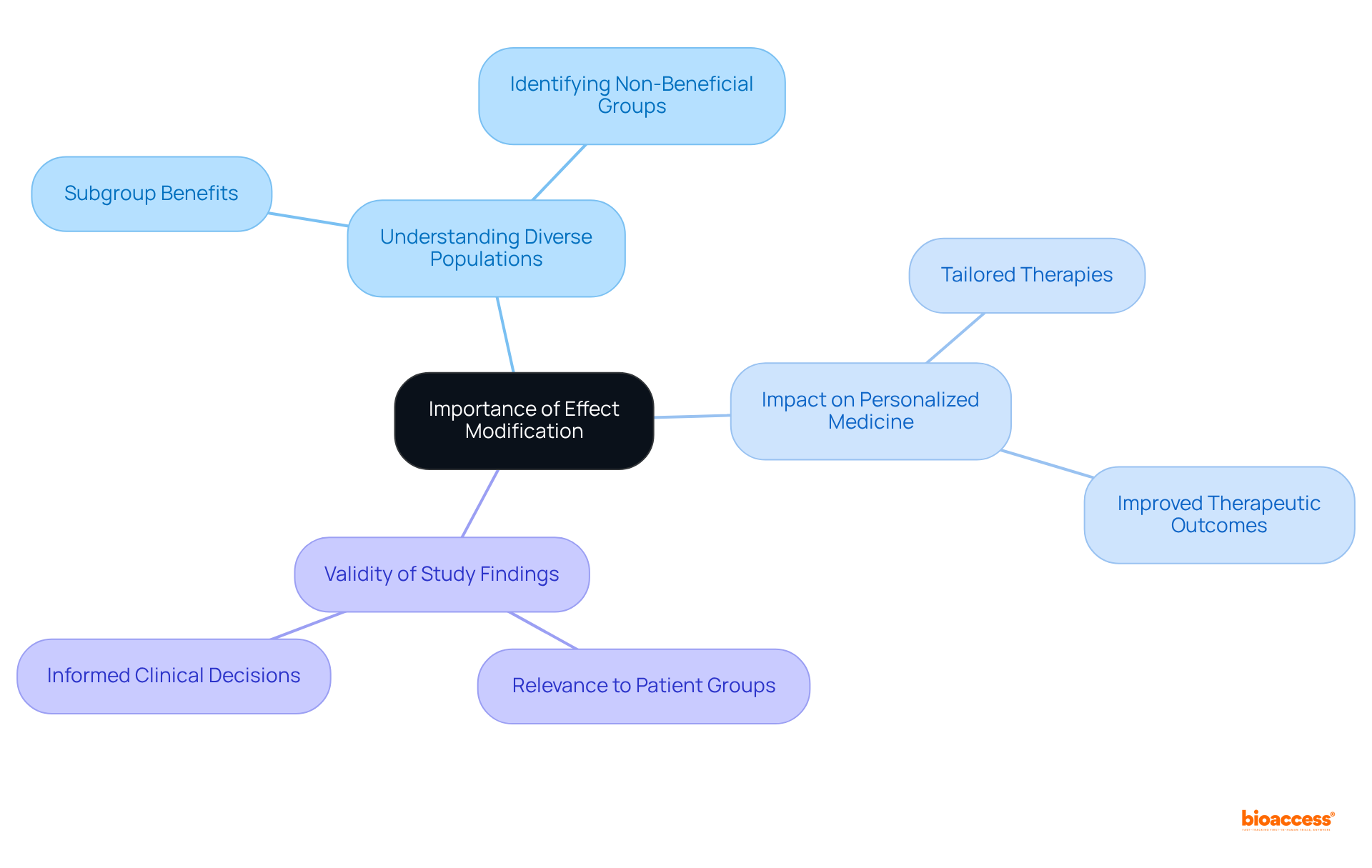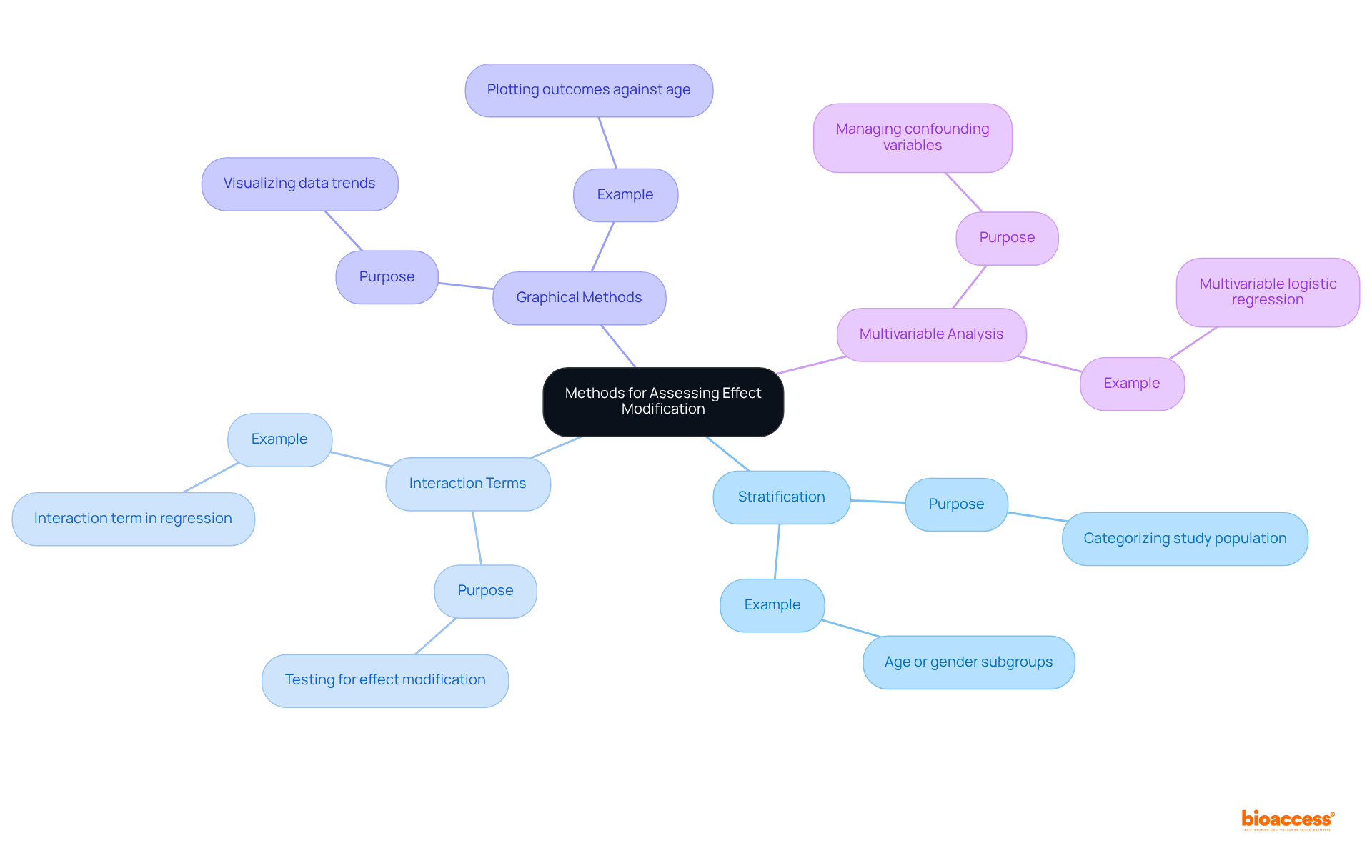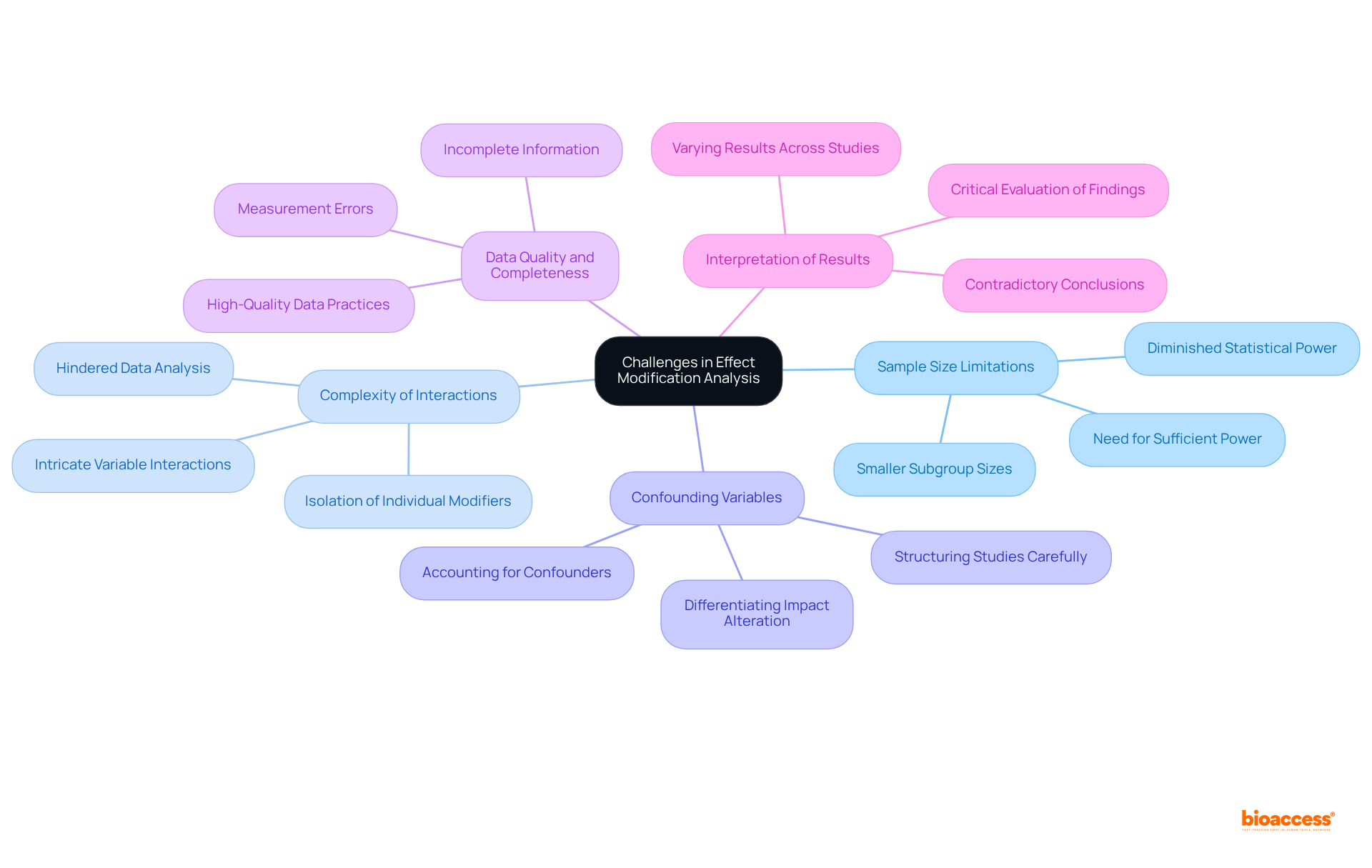


This article delves into the critical concept of effect modification in clinical research, which signifies the alteration of the relationship between an exposure and an outcome influenced by another variable. Understanding effect modification is essential for personalized medicine and for drawing accurate conclusions from studies.
The article highlights various methods for identifying effect modification, including:
Additionally, it addresses the challenges faced in this area, such as:
This underscores the necessity for robust methodologies in clinical research.
Understanding the nuances of effect modification is essential in clinical research, as the interaction between various factors can significantly influence treatment outcomes. By delving into this concept, researchers can uncover critical insights about how different populations respond to interventions, paving the way for more personalized and effective healthcare solutions.
However, the complexities and challenges associated with analyzing effect modification raise important questions:
Addressing these questions is vital for advancing the field and enhancing patient care.
Outcome alteration occurs when the influence of a primary exposure, or risk factor, on a result is subject to effect modification by the presence of another variable known as the influencing variable. For example, in a clinical trial evaluating a new medication, the drug's effectiveness may vary based on patient characteristics such as age, gender, or pre-existing conditions. This phenomenon highlights the importance of considering how different factors can lead to effect modification, making it essential for researchers to identify and analyze these modifiers during study design and data interpretation. Notably, interaction alteration differs from confounding; it signifies a genuine relationship between variables rather than a misrepresentation of the outcome due to an external factor.

Effect modification plays a critical role in clinical research, facilitating a comprehensive understanding of interventions across diverse populations. By identifying effect modification, researchers can determine which subgroups stand to benefit most from a particular intervention, or conversely, which groups may not experience any advantage at all. This insight is essential for personalized medicine, where therapies can be tailored to individual patient characteristics, ultimately improving therapeutic outcomes.
Furthermore, recognizing effect modification in changes of influence enhances the validity of study findings, ensuring that conclusions drawn from research are pertinent to the intended patient groups. For example, if a method is found to be effective in older adults but ineffective in younger individuals, this knowledge empowers clinicians to make informed decisions based on patient demographics.

In clinical research, assessing effect modification is crucial, utilizing several statistical methods to ensure accurate interpretations of results.
Stratification involves categorizing the study population into subgroups based on potential influence modifiers, such as age or gender. This method allows researchers to examine differences in outcomes across various populations, providing valuable insights into effect modification by these modifiers.
Interaction terms in regression models enable researchers to include specific terms in regression analyses to statistically test for effect modification of impact. For instance, in a linear regression model, effect modification can be indicated by an interaction term between intervention and age, revealing whether the intervention's influence varies by age group.
Graphical Methods serve as powerful tools for visualizing data. By plotting intervention outcomes against continuous variables like age, researchers can identify trends or patterns that indicate changes in influence, enhancing understanding of the data.
Multivariable Analysis incorporates advanced statistical methods, such as multivariable logistic regression, to manage confounding variables while evaluating impact alteration. This approach allows researchers to assess the independent influence of modifiers through effect modification on treatment outcomes, ensuring a comprehensive analysis.
By utilizing these techniques, researchers can effectively recognize and measure impact alteration, leading to more precise interpretations of their findings.

Analyzing effect modification introduces several significant challenges that researchers must navigate effectively.
Sample Size Limitations: Dividing data into subgroups can lead to smaller sample sizes, potentially diminishing the statistical power needed to identify significant outcomes. It is crucial for researchers to ensure that their studies are sufficiently powered to evaluate changes in impact.
Complexity of Interactions: Influence alteration often involves intricate interactions among multiple variables, complicating the task of isolating the impacts of individual modifiers. This complexity can hinder data analysis and interpretation, necessitating careful consideration of effect modification.
Confounding Variables: Differentiating between impact alteration and confounding can be particularly challenging. Researchers must meticulously structure their studies and analyses to account for possible confounders that may obscure genuine effect modification.
Data Quality and Completeness: Incomplete information or errors in the measurement of variables can significantly impede the evaluation of changes in impact. Ensuring high-quality data collection and management practices is essential for reliable analysis.
Interpretation of Results: Findings related to effect modification can sometimes lead to contradictory conclusions, especially when different studies report varying results for the same modifiers. Therefore, researchers must critically evaluate their findings within the context of existing literature and clinical relevance.
By being acutely aware of these challenges, researchers can take proactive steps to mitigate potential issues and enhance the reliability of their effect modification analyses.

Effect modification serves as a pivotal concept in clinical research, emphasizing how the impact of an exposure on an outcome can vary across different groups due to the influence of additional variables. Recognizing effect modification is essential for researchers, as it fosters a deeper understanding of how various factors can affect treatment efficacy, ultimately guiding more personalized approaches to patient care.
Throughout this article, we have explored key points such as the definition of effect modification, its significance in enhancing study validity, and methods for assessing it. Techniques including:
equip researchers with the necessary tools to accurately identify and measure effect modification. Furthermore, the challenges associated with analyzing effect modification, such as sample size limitations and the complexity of interactions, underscore the need for meticulous study design and analysis.
In light of these insights, it is crucial for researchers to prioritize the identification and analysis of effect modification in their studies. By doing so, they not only enhance the robustness of their findings but also contribute to the advancement of personalized medicine, ensuring that interventions are tailored to the unique characteristics of diverse patient populations. Embracing effect modification as a fundamental aspect of clinical research can ultimately lead to improved health outcomes and more effective healthcare strategies.
What is effect modification in clinical research?
Effect modification occurs when the influence of a primary exposure or risk factor on an outcome is altered by the presence of another variable, known as the influencing variable.
Can you provide an example of effect modification?
An example of effect modification is in a clinical trial evaluating a new medication, where the drug's effectiveness may vary based on patient characteristics such as age, gender, or pre-existing conditions.
Why is it important to consider effect modification in research?
It is essential to consider effect modification because different factors can influence the outcome, making it crucial for researchers to identify and analyze these modifiers during study design and data interpretation.
How does effect modification differ from confounding?
Effect modification signifies a genuine relationship between variables, while confounding refers to a misrepresentation of the outcome due to the influence of an external factor.